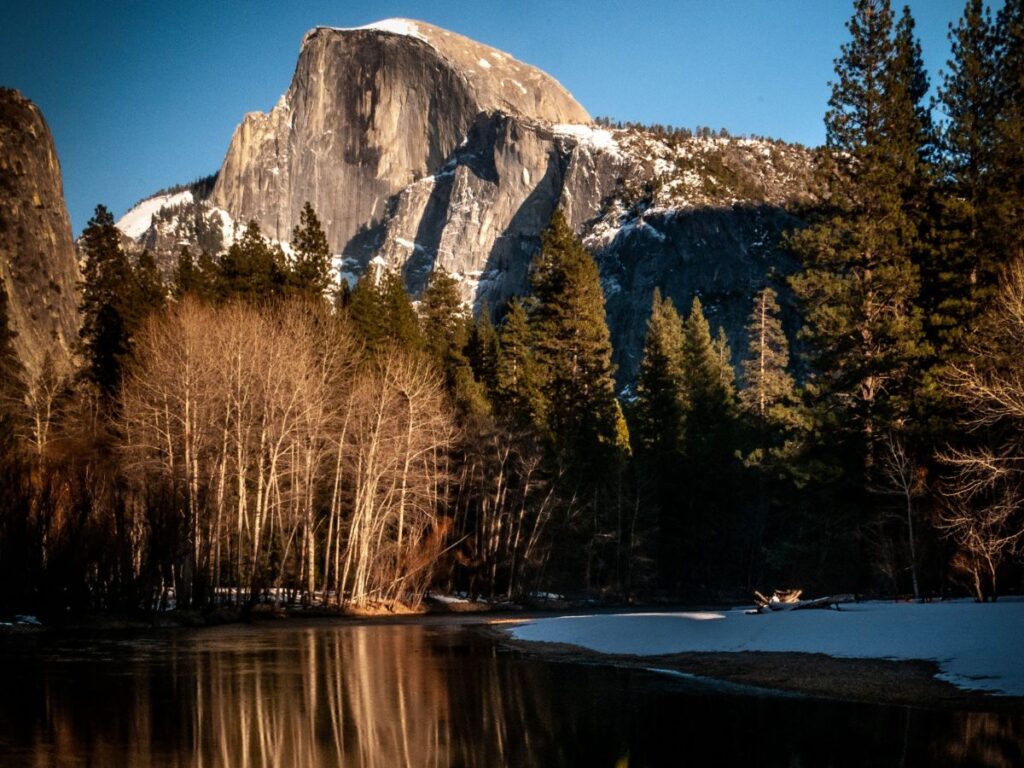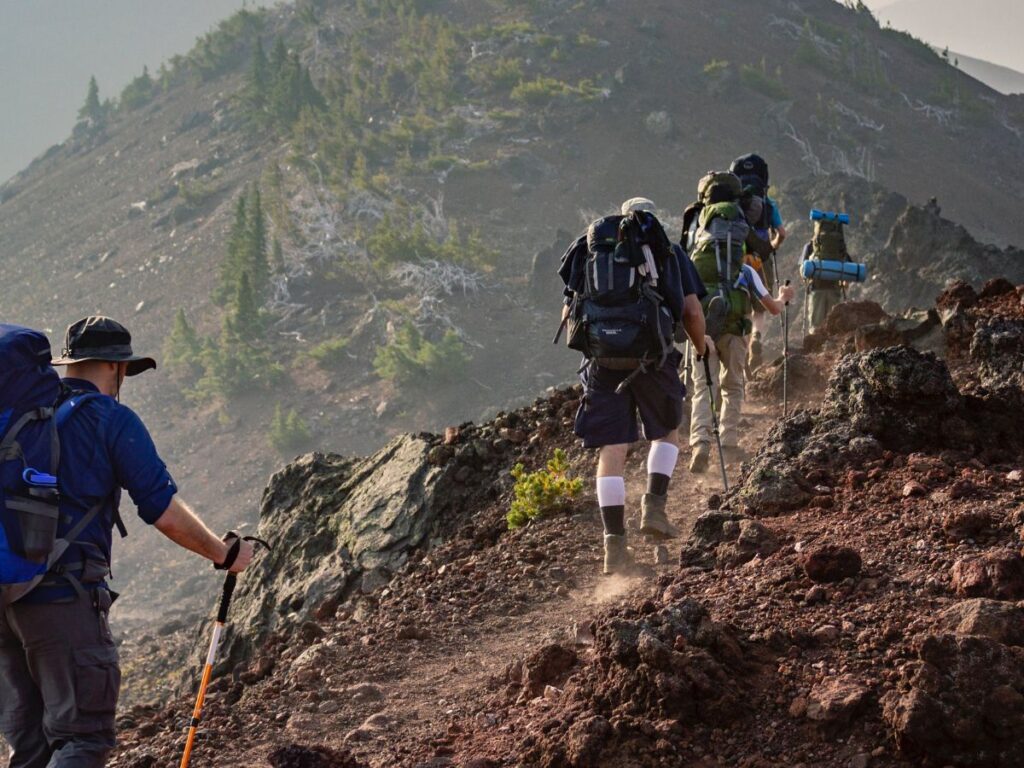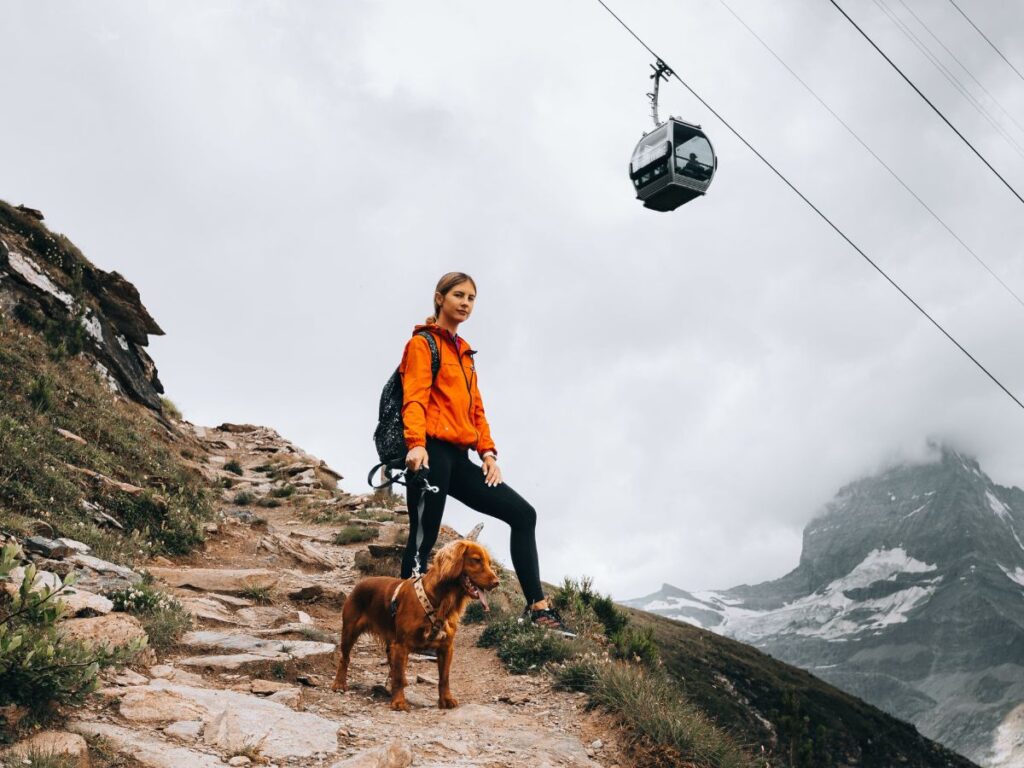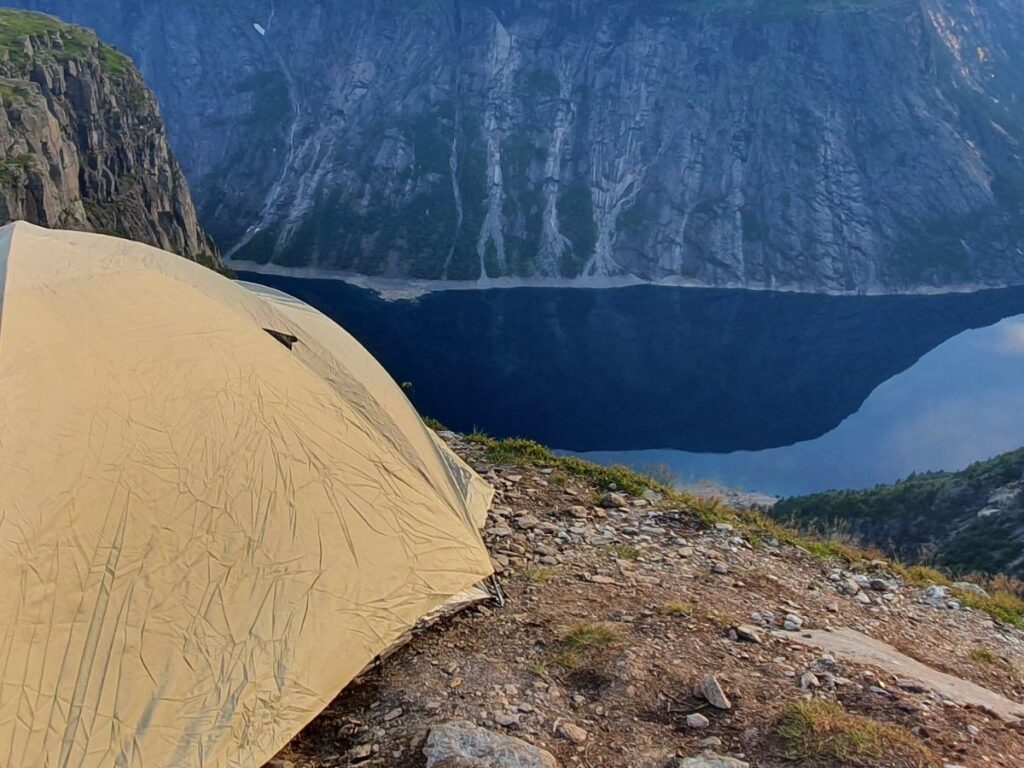Rising majestically above the serene landscapes of Yosemite National Park, Half Dome stands as a testament to nature’s grandeur and the timeless allure of wilderness exploration. A beacon for adventurers and a muse for artists, this iconic granite monolith invites visitors from around the world to experience unparalleled views, thrilling hikes, and moments of introspection. From navigating its famous cables to appreciating the biodiversity around its trails, Half Dome offers a myriad of experiences waiting to be discovered. As you delve into this guide, you’ll uncover not just the raw beauty of Half Dome, but also essential tips, intriguing events, and a rich tapestry of natural wonders that promise to make your journey unforgettable.
Historical Background of Half Dome in Yosemite National Park
Half Dome, with its distinctive shape, is a product of both volcanic activity and glacial erosion. Its formation traces back millions of years. The region was historically inhabited by Native American tribes, who considered the dome a sacred site and a focal point in many of their legends.

Physical Features and Geography
- Stands about 4,737 ft above the valley floor.
- Distinct crescent shape created from geological processes.
- Surrounded by lush valleys, meadows, and other granite formations.
- Panoramic views of the park from its peak.
- Located in the eastern section of Yosemite Valley.
Routes to Half Dome
The journey to Half Dome in Yosemite offers hikers two primary routes:
Mist Trail
This is the more direct route, covering about 14 to 16 miles round-trip, depending on the exact trailhead start. The trail begins in Yosemite Valley near the Happy Isles Nature Center. Mist Trail is aptly named, as it leads hikers up a set of steep granite stairs right past Vernal and Nevada Falls. Especially during the spring and early summer, the mist from the waterfalls can drench hikers, hence the name. This route is not only steeper but also offers some of the most iconic views in Yosemite. After Nevada Fall, the Mist Trail joins the John Muir Trail leading to Half Dome.
John Muir Trail (JMT)
Slightly longer, this trail is considered a bit easier on the knees because it doesn’t have the steep stair sections that Mist Trail does. The JMT also begins in Yosemite Valley and intersects with the Mist Trail at several points. Hikers on this trail will also enjoy views of Vernal and Nevada Falls, but from a different perspective. After the top of Nevada Fall, the trail continues through the Little Yosemite Valley and then starts its ascent towards Half Dome.
Hiking to Half Dome
Starting at the Yosemite Valley Trailhead, the path meanders towards the first significant viewpoint, the Vernal Fall Footbridge. From here, the Vernal Fall cascades down in its full might, a sight that especially thrills first-time visitors. As hikers progress upwards on the Mist Trail, the journey becomes damp and cool, courtesy of the waterfall’s mist. This climb offers an intimate experience with the Vernal Fall, with the sound of rushing waters providing a rhythmic backdrop.
The next phase of the journey leads to the majestic Nevada Fall. The view from here is panoramic, with Liberty Cap’s granite peak in the foreground and the backcountry wilderness in the distance. The Nevada Fall viewpoint also serves as a popular rest stop where hikers can rejuvenate and refuel.
Post these waterfall encounters, the trail opens into the Little Yosemite Valley. This flat expanse is a stark contrast to the uphill climbs and offers a serene meadow, perfect for a breather and some picturesque photography. It’s not uncommon to spot deer or other wildlife here.
The Subdome is the final challenge before reaching Half Dome. While it might seem dwarfed by the Dome itself, the ascent is rigorous. However, the reward is immense, with wide-ranging views of Yosemite unfolding as one climbs. Upon reaching the base of Half Dome, hikers are faced with the famed cables. The effort of the ascent is immediately forgotten once the summit is reached. From here, the entirety of Yosemite National Park stretches in all directions, making the arduous journey worth every step.

Events in Half Dome
The following events can be enjoyed in Half Dome:
Half Dome Sunrise Hike
This event is a unique opportunity for those who wish to witness the world awakening from the peak of Half Dome. Guided by knowledgeable park rangers, participants embark on a trek during the pre-dawn hours, navigating the path with the aid of headlamps. Upon reaching the summit, they’re greeted by a surreal view as the sun’s first rays paint Yosemite’s landscape, accompanied by tales of the region’s history and geology from the guides.
Yosemite Stargazing
Held on specific nights when the sky is clearest, Yosemite StarGazing is an astronomical treat. Attendees are guided by professional astronomers who provide telescopes and share insights into the celestial wonders. From the prominent constellations to distant galaxies, this event is a journey through the universe from the unique vantage point of Half Dome.
Nature & Photography Walks
Tailored for photography enthusiasts, these guided walks focus on capturing the pristine beauty surrounding Half Dome. Expert photographers lead the way, sharing tips on angles, lighting, and techniques. With cascading waterfalls, vast meadows, and the iconic granite façade of Half Dome itself, participants leave with memory cards full of postcard-worthy shots.
Annual Climbing Festival
A nod to Yosemite’s storied climbing history, the Annual Climbing Festival is a gathering of climbing aficionados. It features film screenings showcasing daredevil ascents, presentations by renowned climbers, and discussions on techniques, safety, and the future of mountain climbing. While Half Dome is a significant highlight, the festival celebrates the climbing culture of the entire Yosemite region.

Wildlife Watch
These events, typically in spring and fall, offer an immersive experience into the wildlife of Yosemite. Guided by park naturalists, participants venture on trails around Half Dome, spotting and learning about animals in their natural habitats. It’s a blend of education and adventure, as every rustle in the bushes could signal a deer, a bear, or a myriad of bird species.
Activities in Half Dome
During your trip to Half Dome, you can enjoy he following activities:
Rock Climbing
Half Dome, with its sheer granite face, is a magnet for rock climbers. Beyond the regular hiking trail, there are dedicated climbing routes that challenge even the most experienced. Ascending these routes provides climbers with a unique perspective of Yosemite and a sense of accomplishment that few other climbs can offer.
Guided Nature Walks
For those keen on understanding the intricate details of Yosemite’s ecosystem, guided nature walks are the answer. With a knowledgeable guide leading the way, hikers can learn about the diverse flora and fauna, geology, and historical significance of landmarks around Half Dome, making the hike not just a physical but also an educational journey.
Backpacking
Multi-day backpacking trips around Half Dome let adventurers immerse themselves fully in the wilderness. With each day bringing new landscapes — from dense forests to gushing waterfalls — backpacking offers a comprehensive Yosemite experience. Nights spent under starlit skies and days trekking through varying terrains make this activity a favorite among many.

Sketching and Painting
The vistas around Half Dome have inspired artists for decades. With a canvas or sketchbook in hand, many visitors find a quiet spot to sit and capture the beauty before them. Whether it’s the play of light and shadow on the granite walls or the vibrant hues of meadows in full bloom, there’s endless artistic inspiration to be found.
Birdwatching
Given the biodiversity of Yosemite, birdwatching is a rewarding activity. Armed with binoculars and guidebooks, enthusiasts can spot species from the tiny hummingbirds to the majestic eagles. The area around Half Dome, with its varied habitats, ensures that every birdwatching session is filled with exciting discoveries.
Half Dome Cables
The Half Dome cables are an essential part of the ascent to the dome’s summit. Spanning the last 400 feet of the hike, these cables are set up during the warmer months and taken down in winter to prevent damage from snow and ice. They are affixed to steel posts, with wooden planks placed approximately every 10 to 15 feet, aiding hikers in their steep climb. The very existence of these cables makes the ascent possible for many, as they provide the much-needed grip and guidance on the dome’s sheer granite face. The experience of ascending with the assistance of these cables, with the vast expanse of Yosemite spread below, is both thrilling and humbling.
Safety During the Hike Using Cables:
- Gloves are essential for better grip on the cables.
- Avoid hiking during rain or thunderstorms as wet granite is slippery, and the area is prone to lightning.
- Always yield to descending hikers.
- Don’t try to bypass others by going outside the designated path.
- Take your time.
- Stay hydrated and take breaks as needed.

Wildlife in Half Dome
- Black Bears
- Mule Deer
- Mountain Lions
- Bird species like mountain bluebird, Clark’s nutcracker, and Steller’s jay
- Smaller mammals like the golden-mantled ground squirrel, chipmunks, and pika
Half Dome Permits
- A permit is required to ascend the Subdome or the Half Dome cables.
- Permits are limited in number to protect the trail and its hikers.
- Permits are distributed through a lottery system with an application period typically in March.
- Approximately 300 hikers are allowed each day – 225 day hikers and 75 backpackers.
- Some permits are available daily due to cancellations, but they are limited and not guaranteed.
Preparation for the Trip
- Sturdy hiking shoes that ensure good grip and reduce fatigue.
- Adequate water supply of at least one gallon per person for the day.
- Energy-rich snacks.
- Layered clothing is best.
- Trail map and compass.
- First-aid kit
- Sunglasses, sunblock, and a wide-brimmed hat.
Celebrities that have climbed Half Dome
Half Dome in Yosemite National Park is an iconic landmark and a rite of passage for many hikers and climbers. Its distinct silhouette and the challenge it presents have not only attracted countless adventure enthusiasts but also a few notable celebrities. Here’s a glimpse into some of the famous personalities who have tackled the Half Dome climb:
Jared Leto: The Oscar-winning actor and musician, known for his roles in films like “Dallas Buyers Club” and as the lead singer of the band Thirty Seconds to Mars, is also a seasoned rock climber. Jared Leto has climbed various rock formations in Yosemite, including Half Dome.
Alex Honnold: Though he’s a celebrity in the world of climbing and not Hollywood, Alex Honnold’s free solo of El Capitan was documented in the Oscar-winning film “Free Solo.” Honnold, with his exceptional climbing skills, has tackled Half Dome numerous times, both roped and free solo.
President Theodore Roosevelt: While not a “celebrity” in the modern sense, President Roosevelt’s 1903 visit to Yosemite with naturalist John Muir included an excursion in the vicinity of Half Dome. Though Roosevelt didn’t summit the formation, his trip was crucial for the conservation movement and the establishment of national parks.

Conservation Efforts
Half Dome, like much of Yosemite, is a testament to natural beauty and the importance of conservation. The following programs underscore these efforts:
The Yosemite Conservancy: This non-profit organization partners with the National Park Service to fund various projects in Yosemite, including trail restoration around Half Dome, habitat restoration, and research. Their efforts ensure that the trail and its surroundings remain preserved for future generations.
Leave No Trace (LNT): Emphasized throughout the park, including Half Dome, LNT principles educate visitors on minimizing their impact, from packing out trash to camping responsibly.
Wildlife Management Programs: With human-wildlife conflicts on the rise, these programs aim to protect both visitors and wildlife. Efforts include educating visitors on safe food storage to prevent bear interactions and monitoring wildlife movement around popular trails.
Cultural Resource Preservation: Beyond natural beauty, Yosemite is home to numerous historical and cultural landmarks. Programs under this banner aim to preserve and educate visitors about indigenous cultures, historic sites, and more.
Fire Management: Natural fires play a crucial role in the ecosystem. These programs study and manage fire’s natural role in the park, ensuring a balance between safety and ecological health.
Key Takeaways
- Half Dome is a majestic granite monolith that stands out as one of the most recognizable features of Yosemite National Park.
- The trail to Half Dome is both challenging and rewarding, offering hikers an opportunity to navigate the renowned cables and witness breathtaking panoramic views.
- Half Dome’s vicinity boasts a diverse range of wildlife, from mountain bluebirds to raptors, offering birdwatching and wildlife spotting opportunities.
- Visitors wishing to ascend Half Dome need to secure a permit, highlighting the park’s dedication to preserving the site and ensuring visitor safety.
- The area hosts events like the Yosemite Star Gazing and the Annual Climbing Festival, enriching visitors’ experiences.
- The park emphasizes conservation initiatives, including the Leave No Trace principle, ensuring that Half Dome remains a pristine attraction for generations to come.
FAQs
- Are there specialized events for photographers around Half Dome?
Yes, Nature & Photography Walks are designed for photography enthusiasts, led by expert photographers to capture the landscape. - How do I know about the current events at Half Dome?
The official National Park Service’s website and visitor centers provide up-to-date information on events. - Is there mobile reception at the top of Half Dome?
Mobile reception can be spotty or non-existent; it’s best to prepare for no signal. - Can I learn about the ecosystem during my hike?
Certainly, guided nature walks provide insights into Yosemite’s flora, fauna, geology, and history around Half Dome. - Is backpacking possible around Half Dome?
Yes, multi-day backpacking trips around Half Dome are available, offering a comprehensive Yosemite wilderness experience. - Can artists find inspiration at Half Dome?
Definitely, many artists visit Half Dome to sketch and paint the breathtaking landscapes. - Is rock climbing safe at Half Dome?
While there are dedicated routes for experienced climbers, it’s essential to take precautions and have the proper equipment. - Are there specific times or seasons best for visiting Half Dome?
While Half Dome is accessible for most of the year, spring and fall are especially popular due to pleasant weather and events like Wildlife Watch. - Are drones allowed at Half Dome?
Drones are generally prohibited in national parks, including the vicinity of Half Dome, to protect wildlife and ensure visitor safety. - Can I bring my pet on guided nature walks?
Pets are typically not allowed on guided nature walks to protect the natural habitat and wildlife.
Extra Scoop for You
Official Website of Yosemite National Park: https://yosemite.org/
Contact Details: 209/372-0200
For those of you who are intrigued about birding, we have some extra reading material recommendations for you. Discover the enchanting world of Yosemite National Park with these popular books:
- The Complete Guidebook to Yosemite National Park” by Steven P. Medley
- Shattered Air: A True Account of Catastrophe and Courage on Yosemite’s Half Dome” by Bob Madgic
